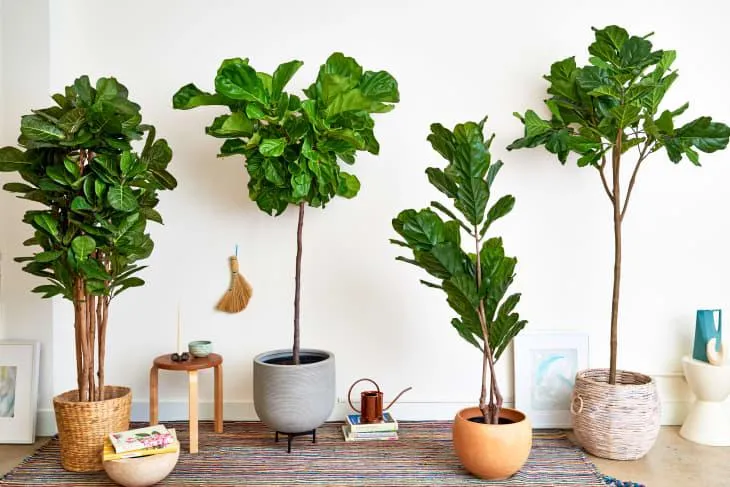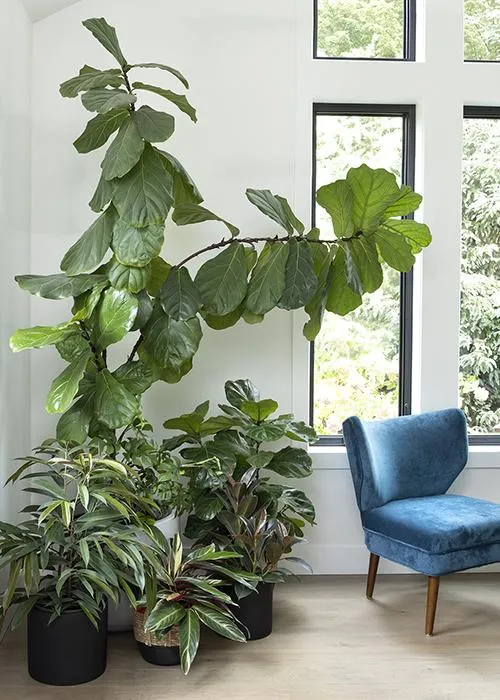All You Need to Know About Growing Indoor Trees
Whether you want to add some greenery to your home or office, or simply grow something from a seed, indoor trees can provide numerous benefits. In this article, I will cover all the important aspects of successfully cultivating trees inside your house.
Choosing the Right Tree Species
From my experience, the first step is selecting a tree variety suitable for indoor conditions. Only certain types thrive without direct sunlight and soil quality found outdoors.
- Figs, citrus and dwarf fruit trees like dwarf apples or oranges adapt well to limited sunlight.
- Bonsai trees are ideal as they’ve been specially bred over centuries to grow slowly in pots.
- Dwarf umbrella trees and Chinese evergreens tolerate low-light levels near windowsills.
I would avoid plants prone to insect infestations indoors like ficus or weeping fig trees which attract indoor pests. Do thorough research before buying to pick a variety meant for indoor culture.
Selecting a Suitable Pot
The container is basically as important as the tree species. A proper pot allows adequate drainage while containing roots. For growing trees, I suggest:
- Terracotta or plastic pots with drainage holes in the bottom.
- A pot at least twice the size of the root ball to accommodate future growth.
- Avoid decorative pots without holes which can lead to root rot due to waterlogged soil.
You can even use repurposed containers like glass jars or wooden boxes if you drill drainage holes. The goal is choosing a vessel meeting both aesthetic and practical needs of your tree.

Preparing the Right Soil Mix
Soil quality largely decides whether an indoor tree thrives or withers. Off-the-shelf potting mixes lack nutrients for long-term growth. Here’s a homemade soil recipe I’ve had success with:
- 1 part compost or well-rotted manure for natural nutrients
- 1 part perlite or vermiculite for drainage and aeration
- 1 part potting soil for structure and water retention
The fluffy mix prevents soggy roots while supplying essential minerals. You can also add sand to drainage-heavy mixes. Proper drainage is key to keeping tree roots healthy indoors.
Providing the Right Care
After potting up your tree, ongoing TLC is important to help it adapt to indoor conditions. Here are the basics:
- Water when the top inch of soil dries out, avoiding soggy or dry extremes.
- Place in indirect sunlight near an east or west-facing window for filtered light.
- Feed monthly in spring and summer with a diluted liquid houseplant fertilizer.
- Prune to maintain shape and remove dead or diseased growth.
- Repot upsize annually in spring using the same well-draining mix.
With a bit of trial and error, you’ll learn each tree’s specific watering needs. Consistency is key – neglect can destroy even the hardiest indoor varieties.
Common Problems and Solutions
No tree is completely trouble-free, but many common issues can be prevented or fixed. Here are a few that commonly pop up:

- Rootbound roots: Timely repotting in larger pots avoids this. Otherwise, loosen the root ball during repotting.
- Overwatering: The number one cause of root rot. Only water when soil is dry to avoid soggy conditions.
- Underwatering: Wilting leaves indicate thirsty soil. Water thoroughly when the top inch is dry.
- Pests: Regular inspections help catch issues early. Isolate infested plants and treat with natural remedies if needed.
With some patience and trail-and-error, you’ll learn to grow healthy indoor houseplants spite of minor problems along the way.
A Few Final Tips
Here are a few more miscellaneous tips worth considering when raising trees indoors:
- Rotate pots occasionally to ensure even growth. I gave my trees a quarter turn every week.
- Some varieties like fruiting citrus benefit from chilling dormancy. Move them to a cooler spot when dropping leaves.
- Low humidity levels inside dry out soil faster. Consider a pebble tray or humidifier to raise indoor moisture levels.
- Sanitize pruning shears between cuts to avoid transmitting disease or rot between plants.
- Enjoy your tree’s growth through photos or a foliage diary. It’s rewarding to track changes over time.
With the right steps, you’ll be on your way to raising stunning indoor trees even without a green thumb. Don’t get discouraged by minor setbacks – persevere with care and your trees will reward you for years to come. Questions are welcome!
I hope this helps anyone wanting to grow trees indoors. Feel free to let me know if you have any other questions. Happy planting!
Top Indoor Trees for Growing
| Tree | Size | Light Needs | Care Level |
|---|---|---|---|
| Money Tree | Small to Medium | Medium to Bright Indirect | Low |
| Chinese Evergreen | Medium to Large | Low to Medium | Low |
| Bonsai Tree | Small | Medium to Bright Indirect | Medium |
| Dieffenbachia | Medium | Medium to Low | Low |
| Janet Craig Dracaena | Medium to Large | Low to Bright Indirect | Low |
FAQ
-
What indoor trees are basically for people to keep at home?
The most common indoor trees which sort of work well for homes are bamboo palm, Chinese evergreen, English ivy, Christmas cactus, orchids, and peace lily.

-
What size pot do indoor trees need?
The pot size basically depends on the type and size of the tree. Smaller trees like bamboo palms can get by in somewhat small pots while larger trees may need bigger pots that are a foot or more in diameter. It’s best to choose a pot that is just slightly bigger than the root ball.
-
How much sunlight do indoor trees need?
Indoor trees have different sunlight needs, so it’s important to check. Many need moderate light, which means they do well in bright areas near windows that get indirect sunlight.Others may need quite a bit more direct sun, like four hours or more per day. It’s always best to go by the type of tree and what it normally grows in outdoors.
-
How often should indoor trees be watered?
Watering needs vary but as a general rule, indoor trees should be kept somewhat moist and you’ll want to water when the top inch or two of soil is dry. Some trees like peace lilies are known as dramatic and may wilt when thirsty to signal you! It’s always better to underwater than overwater, so go slowly at first until you learn the signs.
-
Do indoor trees need fertilizer?
Most indoor trees will benefit from occasional fertilizing during their growing seasons, maybe March-October. Look for all-purpose fertilizers formulated for houseplants which are usually diluted to 1/2 or 1/4 strength. Apply every few months according to package instructions. Watch for burned leaf tips if you over-fertilize. According to experts, too much fertilizer can be as bad as too little!
-
How do you care for an indoor tree over winter?
During the shorter days of winter, indoor trees may drop some leaves or go dormant depending on the type. They’ll still need regular watering to stay hydrated. Move them in a spot with somewhat less direct light, around four hours max. Cut back on fertilizing. And consider giving them a humidifier nearby to mimic their native climate. With some care like that, most trees bounce back strong come spring!

-
Is there an indoor tree that grows fast?
Bamboo palms seem to grow rather rapidly compared to some other indoor trees. Ivy and pothos may also spread and grow quite a bit over the course of a year if given the right conditions. But growth largely depends on the specific tree species as well as how much light, fertilizer, and water it gets. Perhaps an indoor fruit tree would be the most stunning if it proved to grow speedy enough, but that seems unlikely according to experts.
-
What trees have awesome fall colors indoors?
Not many indoor trees actually change color in fall like maples do outside. However, some dwarf citrus trees may produce small oranges, lemons or limes with outstanding fragrance. Fig trees offer uniquely shaped leaves that turn yellow or red come autumn. Or you might look for a flowering quince bush which bears cheery orange or pink blooms. So in summary, while indoor trees don’t wow with fall colors usually, there are a few with amazing autumn appeals of their own.
On the one hand, indoor trees can bring amazing beauty and life into a home. But they also require regular care and maintenance year-round. It’s always wise to research the needs of specific tree types. With some expert advice and your own green thumb, indoor trees can grow stunning. Perhaps start with a more resilient variety if you’re new to this, and see how it goes! Let me know if you have any other indoor tree questions!
